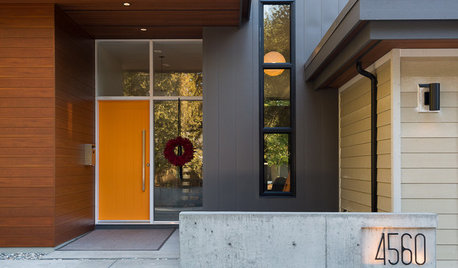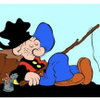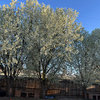help with low maintenance lawn
MTKirk
12 years ago
Related Stories

LANDSCAPE DESIGN7 Low-Maintenance Lawn Alternatives
Turf isn't the only ground cover in town. Get a lush no-grass lawn with clover, moss and other easy-care plants
Full Story
FALL GARDENINGGreat Design Plant: Low-Maintenance Allium Cernuum
Nodding onion is a Mid-Atlantic native bulb with beautiful midsummer blooms
Full Story
CURB APPEALEntry Recipe: Low-Maintenance Meets Contemporary Curb Appeal in Canada
A neighborhood-appropriate mix of textures and colors invites visitors to linger as they approach
Full Story
SELLING YOUR HOUSE10 Low-Cost Tweaks to Help Your Home Sell
Put these inexpensive but invaluable fixes on your to-do list before you put your home on the market
Full Story
HOUZZ TOURSMy Houzz: Luminous and Low Maintenance in New Orleans
See the new build that replaced a hurricane-ravaged house, beginning a new chapter for a retiring couple
Full Story
GARDENING GUIDESGreat Design Plant: Rosa Banksiae a Low-Maintenance Beauty
This thornless, disease- and insect-resistant rose brings showers of white or yellow flowers to the spring garden
Full Story
KITCHEN COUNTERTOPS7 Low-Maintenance Countertops for Your Dream Kitchen
Fingerprints, stains, resealing requirements ... who needs ’em? These countertop materials look great with little effort
Full Story
KITCHEN CABINETS9 Ways to Get Low-Maintenance Kitchen Cabinets
Save valuable elbow grease and time with these ideas for easy-to-maintain cabinets
Full Story
MOST POPULARMeet a Lawn Alternative That Works Wonders
Carex can replace turfgrass in any spot, is low maintenance and adjusts easily. Add its good looks and you’ve got a ground cover winner
Full Story
GARDENING GUIDES8 Unthirsty Plants Help You Save Water in Style
Spend less effort and money on your landscape with drought-tolerant and native plants that liven up your yard
Full StoryMore Discussions









Skybird - z5, Denver, Colorado
MTKirkOriginal Author
Related Professionals
Citrus Heights Landscape Architects & Landscape Designers · Woodinville Landscape Architects & Landscape Designers · East Patchogue Landscape Architects & Landscape Designers · Aurora Landscape Contractors · Springfield Landscape Contractors · Cordele Landscape Contractors · Fairfield Landscape Contractors · Fort Wayne Landscape Contractors · Nanuet Landscape Contractors · Roswell Landscape Contractors · Tavares Landscape Contractors · North Hills Landscape Contractors · Coachella Solar Energy Systems · East Brunswick Solar Energy Systems · Madison Solar Energy SystemsDan _Staley (5b Sunset 2B AHS 7)
Skybird - z5, Denver, Colorado
bpgreen
mstywoods
bpgreen
Skybird - z5, Denver, Colorado
mstywoods
bpgreen
mstywoods
Skybird - z5, Denver, Colorado
mstywoods